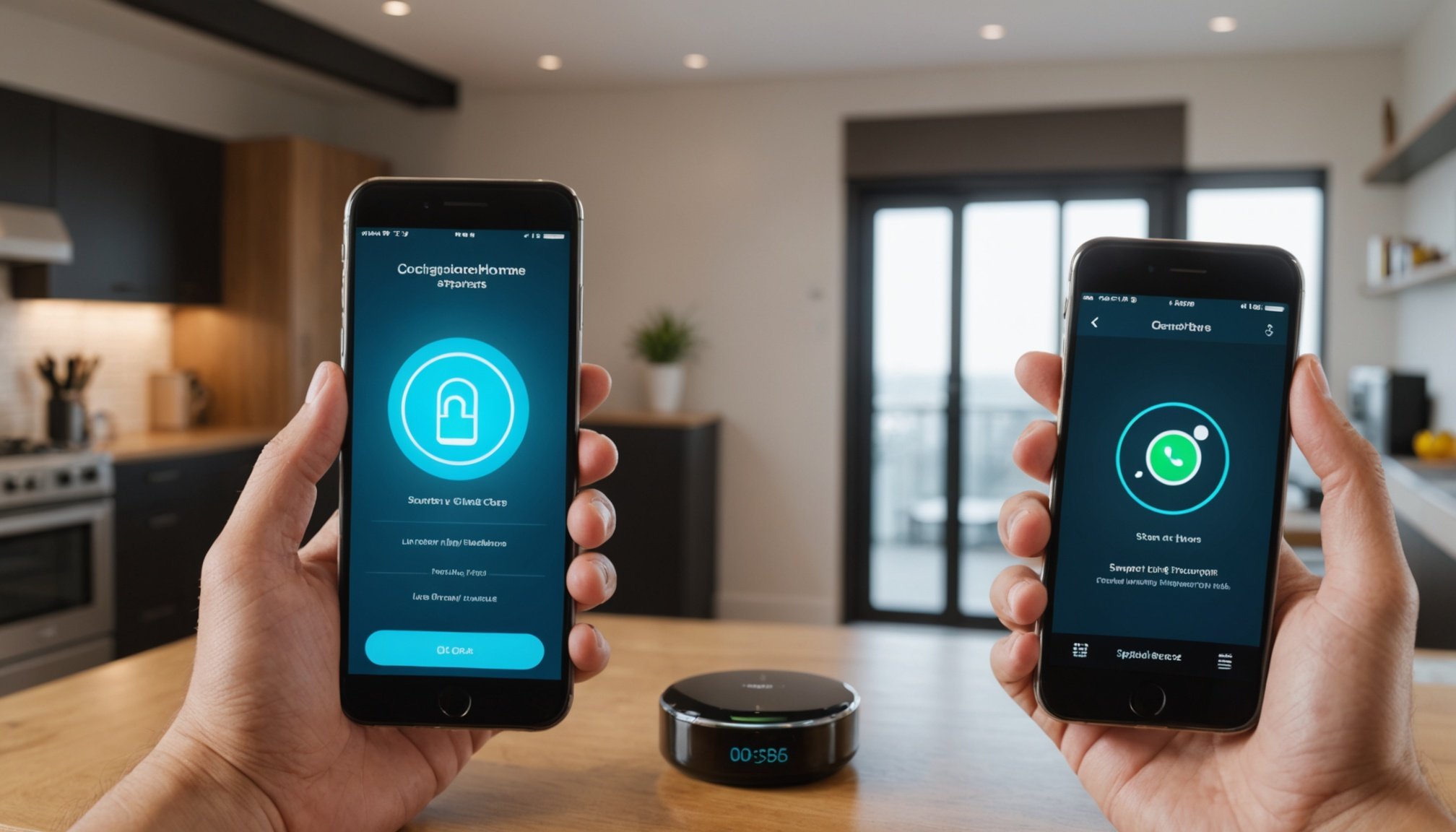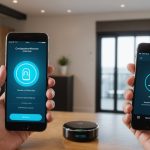Unlocking the Potential: Top Strategies for Transforming Your Smartphone into a Smart Home Hub
In the era of smart home technology, turning your smartphone into a central hub for controlling and automating your home has never been more feasible or appealing. Here’s a comprehensive guide on how to transform your smartphone into the nerve center of your smart home, enhancing convenience, security, and energy efficiency.
Understanding the Basics of Smart Home Technology
Before diving into the strategies, it’s essential to understand the fundamentals of smart home technology. Smart homes are built around the concept of the Internet of Things (IoT), where various devices are interconnected and can be controlled remotely through a central hub or app.
Also to discover : Unlocking Your Smartphone: Top Techniques for Seamless Remote Desktop Access
Key Components of a Smart Home
- Smart Devices: These include smart lights, thermostats, security systems, and appliances that can be controlled and monitored remotely.
- Hub or Controller: This is the central device that connects and manages all your smart devices. Popular options include Amazon Echo, Google Nest Hub, and Samsung SmartThings.
- Home App: This is the software interface that allows you to control and automate your smart devices. Examples include the SmartThings app and the Google Home app.
Choosing the Right Smart Home Hub
The hub is the brain of your smart home, and selecting the right one is crucial for seamless integration and control.
Popular Smart Home Hubs
-
Amazon Echo (Alexa)
In parallel : Mastering Smart Home Pet Care: The Ultimate Guide to Smartphone Control
-
Easy to set up and use
-
Wide compatibility with other smart devices
-
Constantly improving with new features
-
Great sound quality for music playback
-
Potential drawbacks: Privacy concerns, occasional misunderstandings of voice commands.
-
Google Nest Hub
-
Visual interface for easier control and information display
-
Great for viewing recipes, watching videos, or as a digital photo frame
-
Doesn’t have a camera, which some users prefer for privacy
-
Doubles as a sleep tracking device
-
Potential drawbacks: Smaller speaker compared to some competitors, limited touch screen functionality.
Comparison Table: Smart Home Hubs
| Feature | Amazon Echo (Alexa) | Google Nest Hub |
|---|---|---|
| Voice Assistant | Alexa | Google Assistant |
| Visual Interface | No | Yes |
| Compatibility | Wide | Wide |
| Privacy Concerns | Yes | No camera |
| Additional Features | Music playback | Sleep tracking |
| Setup Ease | Easy | Easy |
Integrating Smart Devices into Your Home
Once you have your hub, the next step is to integrate various smart devices into your home.
Essential Smart Home Devices
- Smart Lights: Devices like Philips Hue or LIFX can be controlled remotely and set to different scenes and routines.
- Smart Thermostats: Devices like Nest or Ecobee can optimize your home’s temperature based on your schedule and preferences.
- Smart Security Systems: Systems like Ring or August can provide real-time monitoring and alerts for enhanced home security.
Ensuring Device Compatibility
Before purchasing any new smart device, ensure it is compatible with your existing smart home ecosystem. For example, if you are using Amazon Alexa, look for devices that work with Alexa.
Enhancing Home Security with Smart Technology
Home security is a critical aspect of smart home technology, and there are several strategies to enhance it.
Smart Door Locks and Garage Doors
- Smart door locks like those from SmartThings offer fingerprint recognition and remote unlocking, providing unparalleled convenience and peace of mind.
- Smart garage doors can be controlled and monitored remotely, ensuring that your garage is secure even when you are away.
Smart Home Alarms with IoT SIMs
- Smart home alarms equipped with IoT SIMs ensure constant connectivity even if your Wi-Fi goes down, providing real-time notifications and updates through cellular networks.
Optimizing Energy Efficiency
Smart home technology can significantly help in optimizing energy efficiency, reducing your energy bills and environmental footprint.
Smart Energy Management
- Devices like smart thermostats and smart lights can be programmed to turn off when not in use or adjust their settings based on occupancy.
- Solar panels with IoT SIMs can track real-time energy production and consumption, optimizing energy storage and usage.
Energy-Efficient Practices
- Use Energy Star certified products to ensure they meet energy efficiency standards.
- Create routines or scenes that automate the turning on and off of devices based on your daily schedule.
Leveraging Automation for Convenience
Automation is at the heart of smart home technology, making your life easier and more convenient.
Creating Custom Routines
- Most smart home systems allow you to create routines or scenes. For example, you could set up a “Good Morning” routine that turns on your lights, adjusts the thermostat, and starts your coffee maker.
Using Voice Commands
- Voice assistants like Alexa or Google Assistant can control multiple devices with a single command, making it easy to manage your smart home.
The Role of IoT SIMs in Smart Homes
IoT SIMs play a crucial role in ensuring that your smart devices stay connected and functional.
Enhancing EV Chargers and Solar Panels
- IoT SIM-enabled EV chargers can monitor and manage charging remotely, optimizing energy use and reducing costs by up to 30%.
- Solar panels with IoT SIMs can predict energy output based on weather data and adjust storage accordingly, boosting efficiency by 10%.
Ensuring Reliable Security Systems
- IoT SIMs in smart home alarms ensure that the system stays functional even during internet outages or natural disasters, providing constant communication through cellular networks.
Future Trends in Smart Home Technology
As smart home technology continues to evolve, several trends are set to shape the future.
Artificial Intelligence and Machine Learning
- AI and ML are becoming increasingly sophisticated, allowing smart home systems to better predict and adapt to your needs. For instance, AI-native air interfaces in future 6G networks promise significant performance improvements and operational efficiencies.
Energy Management and Sustainability
- With growing climate concerns, expect more smart devices focused on optimizing energy usage and supporting renewable energy systems. Technologies like Zero or Near-Zero Energy Communication (ZEC) in 6G networks aim to reduce the environmental footprint associated with IoT devices.
Health and Wellness
- Smart home devices are beginning to play a role in health monitoring and promoting wellness. This trend is likely to continue, with smart homes integrating more health-focused features.
Practical Insights and Actionable Advice
Here are some practical tips to help you get the most out of your smart home setup:
Start Small and Expand Gradually
- Don’t feel pressured to make your entire home smart overnight. Start with one or two devices and gradually add more as you become comfortable with the technology.
Prioritize Network Security
- As you add more connected devices to your home, it’s crucial to maintain good network security. Use strong, unique passwords for your Wi-Fi and smart device accounts, and keep your router’s firmware updated.
Use Data to Your Advantage
- Smart home apps provide valuable data on your energy usage and device performance. Use this data to optimize your routines and settings for better efficiency and convenience.
Transforming your smartphone into a smart home hub is a powerful way to enhance the convenience, security, and energy efficiency of your home. By choosing the right hub, integrating compatible devices, and leveraging automation and IoT technology, you can create a smart home that adapts to your needs and preferences.
As smart home technology continues to evolve, staying informed about the latest trends and innovations will help you make the most of your smart home setup. Whether you’re a first-time buyer or an experienced user, the potential of smart home technology is vast and waiting to be unlocked.











